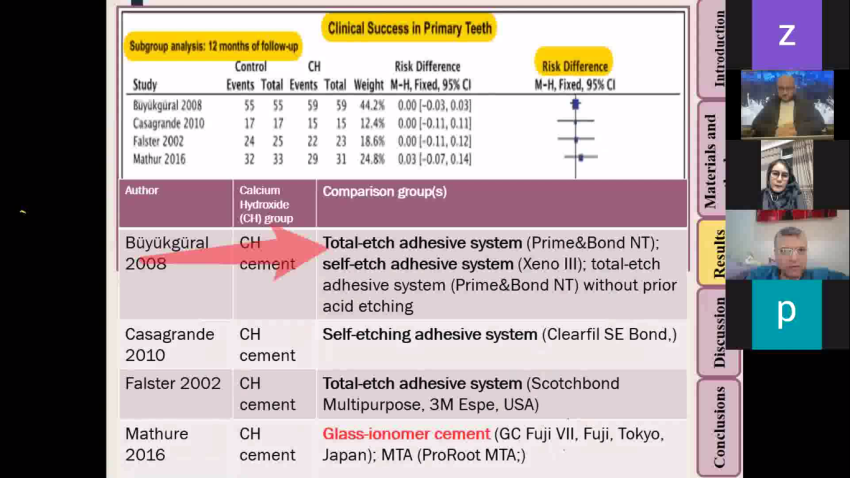The third Online Journal Club saw the presence of more than 160 participants

Appraise To Raise Group has held the third TUMS Online Journal Club on Tuesday, May 26th, 2020 at 08:00 PM (Tehran local time), 03:30 PM (GMT) with collaboration of Endodontics Department, School of Dentistry. According to Dr. Mohammad H. Nekoofar, Moderator of the session and Leader of Appraise To Raise Group, this session discussed an article entitled “Is a calcium hydroxide liner necessary in the treatment of deep caries lesions? A systematic review and meta‐analysis” published in International Endodontic Journal, 2018.
Prof. Wellington Luiz De Oliveira da Rosa, the first author of the article and adjunct professor in the Department of Restorative Dentistry at the Faculty of Dentistry, Federal University of Pelotas (UFPel), and Prof. Adriana F. da Silva, the corresponding author and associate professor at the Faculty of Dentistry at UFPel, attended the meeting and answered the questions of the presenter and the audience.
According to Dr. Zahra Mohammadi, presenter of the session and resident of Endodontics Department, this journal club which saw the presence of more than 160 participants, discussed the use of calcium hydroxide (CH) liner and whether it improves the clinical success in the treatment of deep caries lesions of primary and permanent teeth. The treatment of deep caries lesions continues to be challenging to clinicians. In an attempt to prevent pulp exposures, which can compromise the prognosis, conservative dentine‐pulp complex therapies have been suggested, such as leaving a layer of contaminated carious tissue over the pulp, after selective or stepwise removal of carious tissue. Although the aforementioned article demonstrated that the use of CH liner in deep caries lesions was unnecessary, there were some critics and debates.
